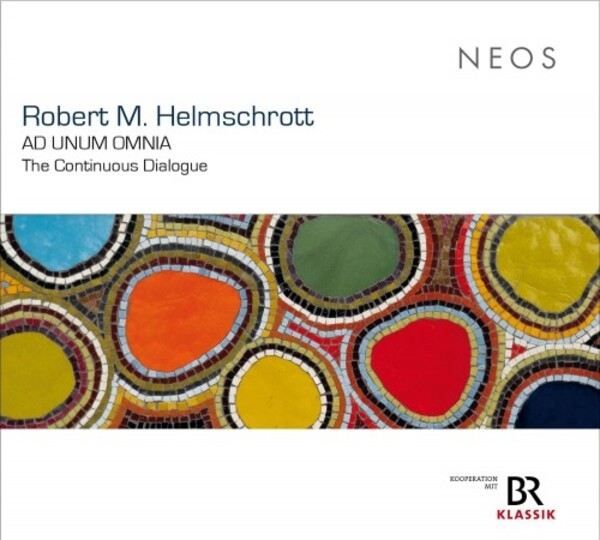
Helmschrott - Ad Unum omnia: The Continuous Dialogue
£26.55
Despatch Information
This despatch estimate is based on information from both our own stock and the UK supplier's stock.
If ordering multiple items, we will aim to send everything together so the longest despatch estimate will apply to the complete order.
If you would rather receive certain items more quickly, please place them on a separate order.
If any unexpected delays occur, we will keep you informed of progress via email and not allow other items on the order to be held up.
If you would prefer to receive everything together regardless of any delay, please let us know via email.
Pre-orders will be despatched as close as possible to the release date.
Label: Neos Music
Cat No: NEOS12412-13
Format: CD
Number of Discs: 2
Expected Release Date: 19th July 2024
Contents
Works
Helmschrott, Robert Maximilian
Dialog mit Mozart (Mozart Variations)Infinitus (Das ununterbrochen Bewegliche)
Omnia
Salut
Simbolo di pace
Artists
Valer Barna-Sabadus (countertenor)Christoph Well (trumpet)
Hans Jurgen Huber (trumpet)
Harald Eckert (trumpet)
Reinhard Schafer (trumpet)
Harald Bschorr (trombone)
Erwin Gaulhofer (trombone)
Robert Schlegl (trombone)
Stefan Schirmer (trombone)
Konstantin Vadeli (violin)
Franz Hauk (organ)
Robert M Helmschrott (organ)
Works
Helmschrott, Robert Maximilian
Dialog mit Mozart (Mozart Variations)Infinitus (Das ununterbrochen Bewegliche)
Omnia
Salut
Simbolo di pace
Artists
Valer Barna-Sabadus (countertenor)Christoph Well (trumpet)
Hans Jurgen Huber (trumpet)
Harald Eckert (trumpet)
Reinhard Schafer (trumpet)
Harald Bschorr (trombone)
Erwin Gaulhofer (trombone)
Robert Schlegl (trombone)
Stefan Schirmer (trombone)
Konstantin Vadeli (violin)
Franz Hauk (organ)
Robert M Helmschrott (organ)
About
AD UNUM OMNIA places the organ as an instrument in a particular spotlight. It is taken out of its liturgical, ritual context and truly represents itself as the "queen of instruments". It unfolds from the quietest register to symphonic orchestral sonority. This fullness of sound, the magnificence, is intensified by the acoustically multidimensional space of the cathedral in which it is installed. Its sound not only demonstrates the magnificent, the all-encompassing, but also interprets the pleading and praying man, his cries of lament and accusation, his humility and arrogance, his life and death, it interprets man's superior reality, it can reflect the universe and - it summarises "faith and knowledge" and refers to reason.
The organ is a voice of the great past (in the field of organ music). In our present, it must also be a voice of the times, able to intervene in all issues affecting contemporary mankind and the societies in which they live. Its expressiveness is the quality of utterances that express emotional states and social affinity with the person addressed (the listener). It is the voice that lifts people out into the space of history.
When Gottfried Wilhelm Leibniz died on 14 November 1716 at the age of 70, Court Councillor von Eckhart had an ornament placed on Leibniz's coffin depicting a One within a Zero and bearing the inscription "omnia ad unum" [Latin for "All to One"]. Born in Leipzig on 1 July 1646, the deeply religious scientist and inventor saw the representation of decimal numbers with the digits 0 and 1 and the associated arithmetic operations as a symbol of "creation constituted according to logical laws".
Error on this page? Let us know here
Need more information on this product? Click here